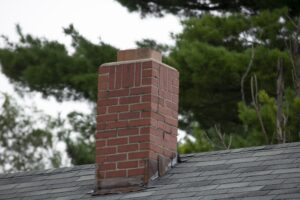Mold is a type of fungus that thrives in dark, damp places. You might not realize that if you are not careful, your chimney flue can make a prime breeding ground for mold.
Mold can cause major structural damage to your chimney and the rest of your home. And if you and other residents of your home breathe in mold, you could face respiratory issues and other medical concerns.
Mold removal in your chimney will involve an intense cleaning process. Ideally, you should take measures to prevent mold growth in the first place. Read on to find advice from expert chimney sweeps to help you stop mold from growing in your chimney.

Waterproof Your Chimney
The chimney sits atop the roof of your home in a prime location to receive the brunt of inclement weather. This means that if your chimney has a leak, you could see moisture seep into your chimney. Not only will moisture pose a threat to your chimney’s stability, but it also puts the structure in danger of mold.
However, you can make efforts to waterproof your chimney to keep out this harmful moisture. This will entail repairing cracks and other structural damage to the chimney, including the flashing, as soon as you can. You can also benefit from installing a rain pan at the top of your chimney to block water from entering your flue during bad weather.
Use a sealant or other water-repellant products on the chimney structure to create an extra layer of protection against moisture. This can add years to the lifespan of your chimney too. Ask a chimney professional about which products will best prevent mold and other damage to your chimney.
Keep Your Chimney Clean
When you burn wood in your fireplace, the smoke flows up your chimney to leave your house. The smoke leaves a tar-like substance called creosote behind in your flue as it escapes. This build-up poses a fire hazard to your home, but it can also retain moisture which will encourage mold growth.
You should schedule a professional chimney sweeping at least once per year to remove creosote build-up and keep your chimney clean. This process will also remove debris, animal nests, and other potential blockages within your chimney.
If your chimney has a blockage, air and smoke cannot ventilate properly. Poor ventilation will also put you at risk of mold growth in your chimney. Make sure you keep your damper open for this reason when you use your fireplace.
Schedule Regular Chimney Inspections
You cannot always tell if your chimney is in danger of mold or has risk factors like blockages within the flue. For this reason, you should schedule an annual chimney inspection with a professional. They can locate potential concerns and promptly fix them before you experience mold growth.
They can also determine if you already have a mold problem. Then they can employ the proper cleaning supplies and techniques to get rid of this fungus to protect the health of the people living in your home as well as your house’s structure.
